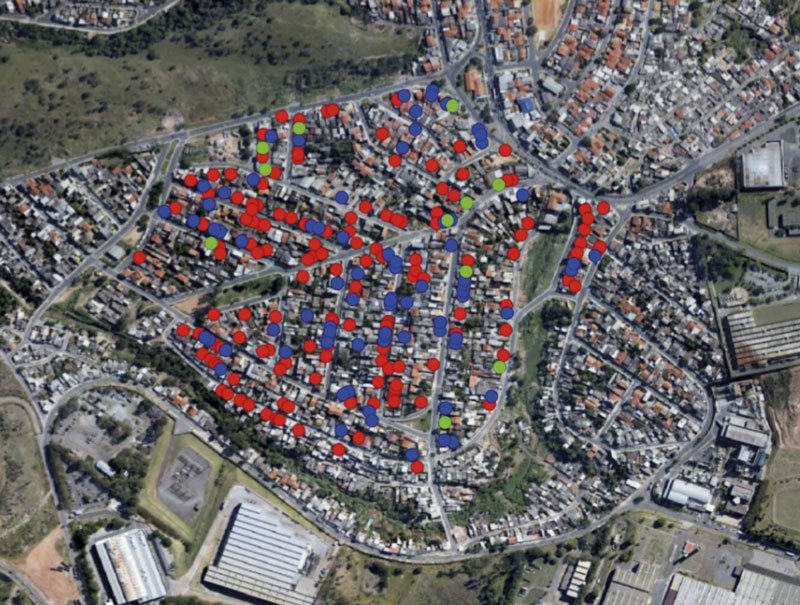
LARANJEIRA, C. et al. medRxiv. 2023Automated detection: green dots indicate higher riskLARANJEIRA, C. et al. medRxiv. 2023
In the battle between humans and the Aedes aegypti mosquito, which transmits dengue fever, a group from the Federal University of Minas Gerais (UFMG) used AI to identify the insect’s breeding grounds. “We are testing which has the greatest correlation with the existence of larvae in reality: aerial images obtained by a drone, or street view images,” says computer scientist Camila Laranjeira, a PhD student being supervised by Jefersson Alex dos Santos at UFMG. The secret is to train computational models to recognize features that indicate the existence of breeding sites. In aerial images, the software looks for swimming pools, water tanks, or puddles; at street level, it uses a three-dimensional photography system to examine housing conditions. “A dilapidated property tends to contain lots of rubble, where mosquitoes often breed.” A case study across 200 blocks of Campinas, a city in the interior of São Paulo State, combined this data with information collected by surveillance agents and mosquito traps that confirm the locations of breeding sites. This part of the research was carried out in partnership with a group led by Francisco Chiaravalloti Neto, an epidemiologist from the School of Public Health at the University of São Paulo (Jornal da USP, March 1).
Republish